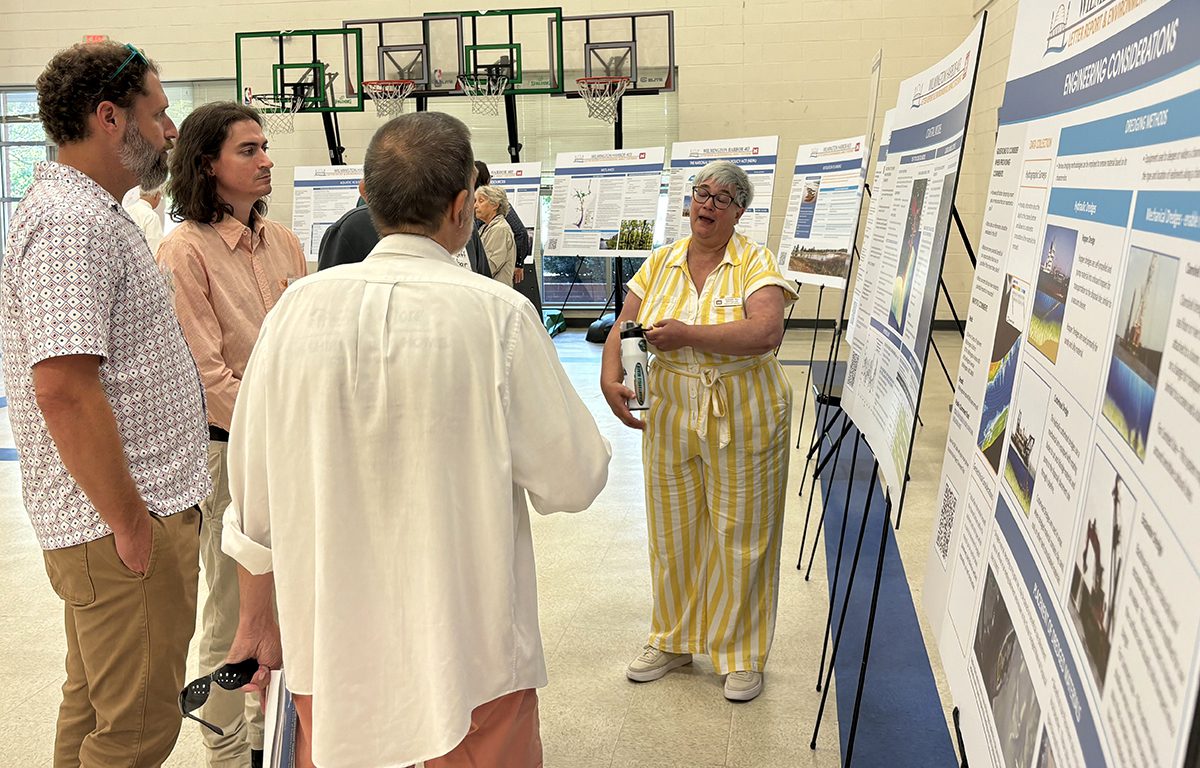
WILMINGTON – The dates may have changed, but the host of concerns raised over the past few years have not as the North Carolina State Ports Authority’s plan to deepen and widen Wilmington Harbor is cast back into the public spotlight.
The U.S. Army Corps of Engineers’ Wilmington District hosted Thursday its first public meeting since publishing a notice of intent that the agency is preparing an environmental study of the ports authority’s proposal to make room for larger container ships to get to and from the Wilmington port.
Supporter Spotlight
The Corps’ notice kickstarts the process in which the public can provide comments, be they questions, suggestions or concerns, on the proposed project.
“We wanted to get this feedback before we invested a lot in our analysis,” said Bret Walters, Wilmington District Planning and Environmental Branch chief. “This is the opportunity to weigh-in very early in the process.”
Walters was among several Army Corps officials on hand at the meeting last week in Sunset Park Elementary School in Wilmington to answer questions and discuss the project with members of the public.
The Corps hosted a series of virtual meetings the first week of this month, each day focusing on specific topics ranging from how material dredged from the channel might be used to how the project might affect cultural resources along the river.
Five years have passed since the ports authority announced its proposal to deepen the harbor from 42 feet to 47 feet, widen the channel in multiple areas, and extend the ocean entrance to the Cape Fear River.
Supporter Spotlight
The ports authority maintains that the changes are needed to keep the Wilmington port, which is more than 25 miles upriver from the Atlantic Ocean, competitive with other East Coast ports by making room for larger container ships coming from Asia.
The changes would accommodate large vessels that can carry 14,000, 20-by-8-foot shipping containers that have been traveling through the Panama Canal since its expansion in 2016.
A plethora of concerns have been discussed about the proposed project over the past few years.
Environmental experts and advocates argue that deepening the channel could exacerbate saltwater intrusion through to the Northeast Cape Fear River and adjoining creeks, eradicate fish habitat, harm cultural resources, and disproportionately affect minority communities along the river.
During the virtual meetings held earlier this month, members of the public again posed those concerns to Army Corps officials, offering a new line of questioning about how disturbing the sediment in a river contaminated by per- and polyfluoroalkyl substances, or PFAS, could further affect its quality.
Carolina Beach resident Anne Terry called the proposed project “very frightening.”
“The fish habitat would be ruined,” she said. “There’ll be erosion. Economically it just isn’t going to make any sense. And, it’s never going to be deep enough. I just don’t run into anybody that thinks this makes sense.”
But the ports authority predicts more cargo will be shipped to the Wilmington port, regardless of the size of the vessels transporting that cargo.
“That cargo is going to come here anyway,” Walter said in one of the virtual meetings hosted at the beginning of June.
That means, if the channel is not deepened, there will be a rise in the frequency of ships traveling to and from the port.
In 2019, then-Assistant Secretary of the Army for Civil Works R.D. James rejected the ports authority’s initial draft study, saying it needed significant revisions before he would pass along his recommendation to Congress for approval.
James approved an updated study the following year, and the proposed project was later conditionally authorized by Congress.
If the Corps’ recommends the conditionally authorized plan to dredge to 47 feet, then that plan will not have to go back to Congress for approval.
Other alternatives to be studied include either no action, which means the current depth and width of the channel would not be changed, or dredging to a depth of 46 feet.
If the Corps recommends an alternative aside from the conditionally authorized plan, then that recommendation will have to go to Congress for approval.
It would be several years before dredging would begin after — or if — the Corps recommends the project.
The public has through July 22 to submit comments to the Corps, which has provided a list of considerations people consider in their comments, including suggestions related to the evaluation of impacts to resources, concerns for themselves and their communities, resources that should be evaluated in the draft environmental impact statement, potential project opportunities, suggestions to alternatives being evaluated in the study, data, studies or reports that would support the analysis in the study, and any information missing in the study.
Once a draft environmental impact statement is released, the Corps will open a 45-day public comment period on that study. The public review and comment period is expected to open in late 2025.
A final environmental impact statement is projected to be released fall 2026.
Public comments may be submitted via any one of the following ways:
- Online.
- Email WilmingtonHarbor403@usace.army.mil.
- Mail to: U.S. Army Corps of Engineers Wilmington Harbor 403, 69 Darlington Ave., Wilmington, NC 28403.








